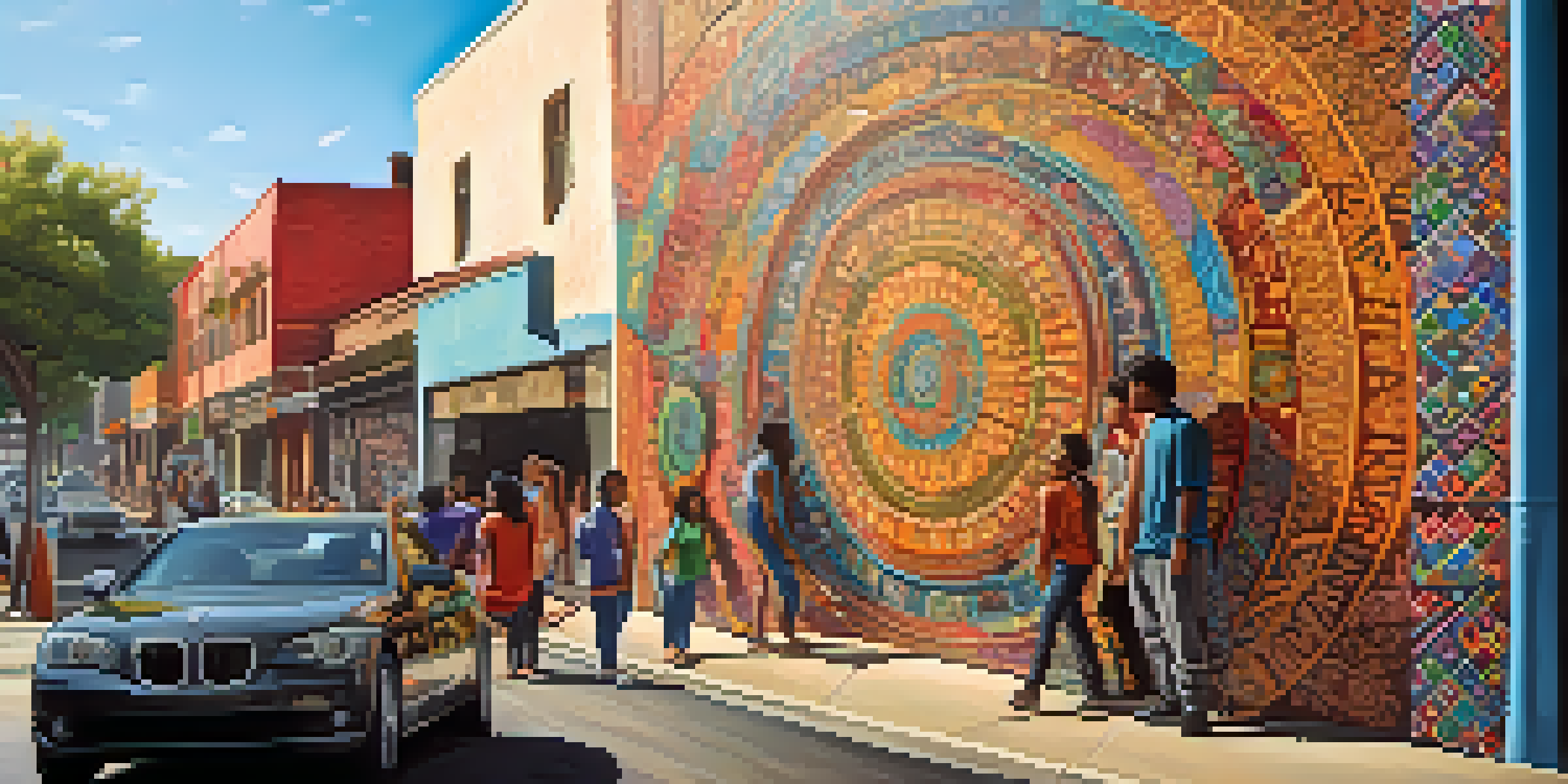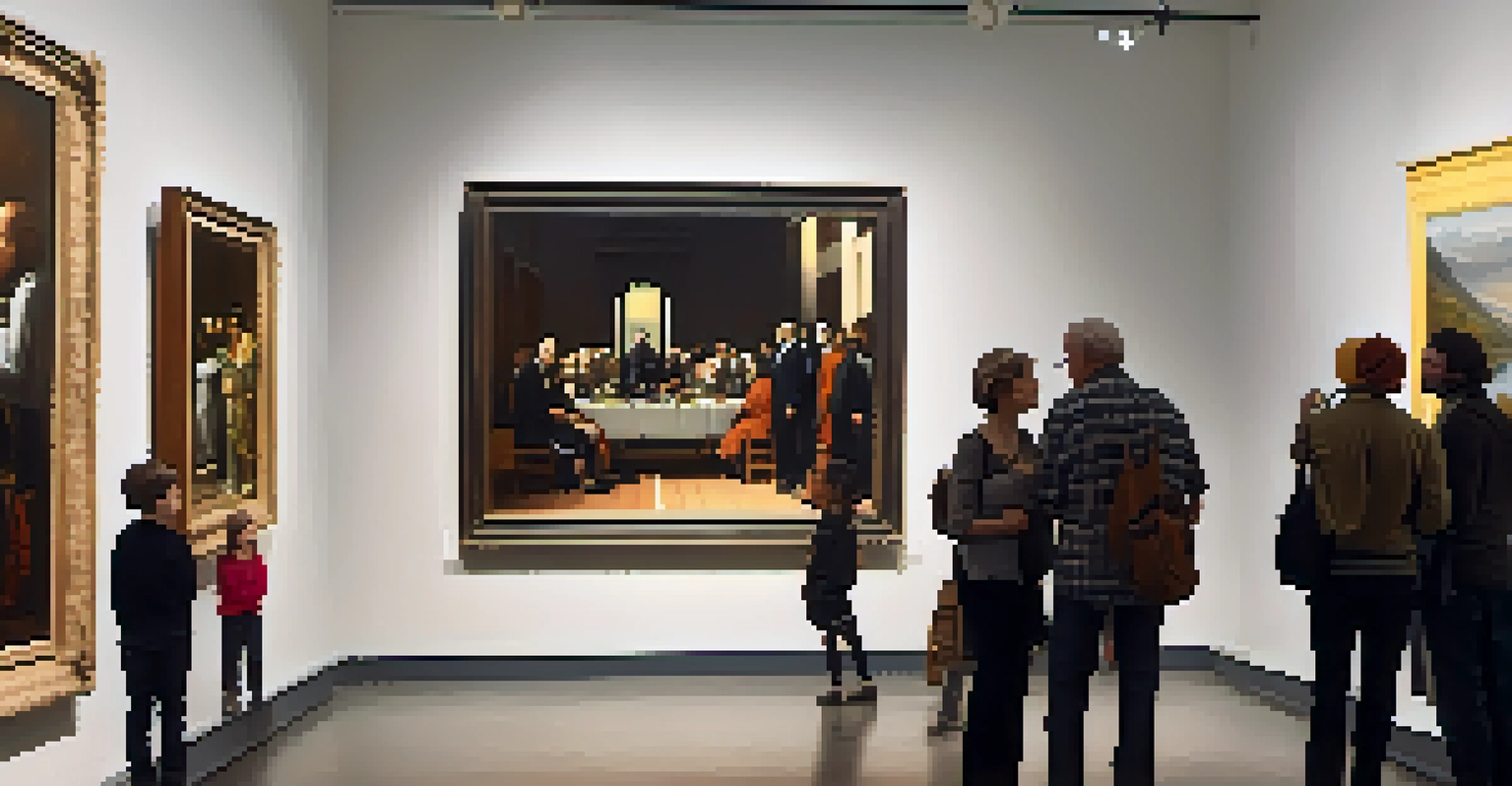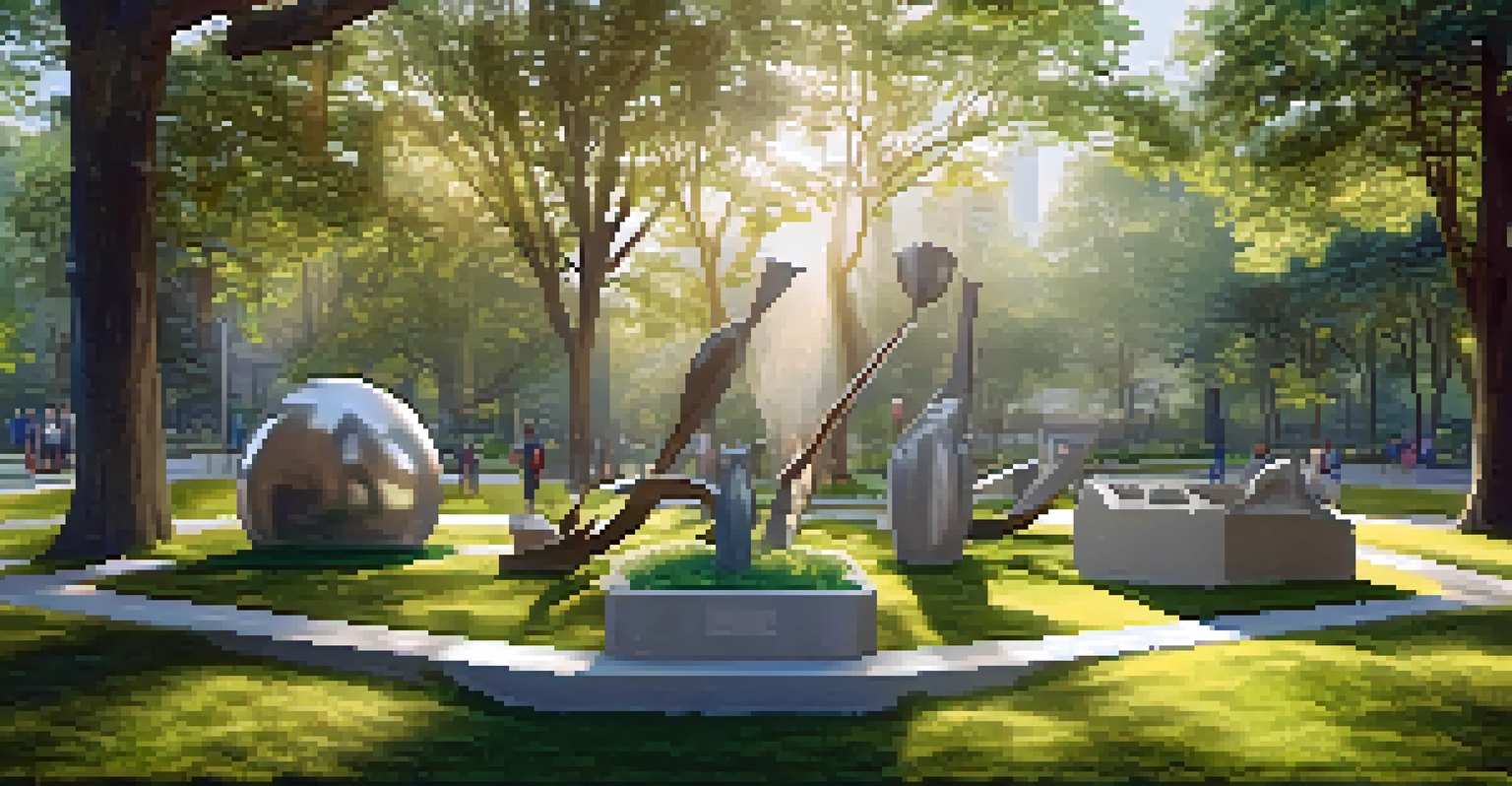Art and Memory: How Culture is Captured and Preserved

The Role of Art in Documenting History and Culture
Art serves as a powerful tool for documenting history, allowing cultures to share their stories through various mediums. From ancient cave paintings to modern street art, each piece reflects the values, struggles, and triumphs of its time. By capturing significant events and everyday life, art acts as a time capsule, preserving the essence of cultural identity for future generations.
Art is the most beautiful of all lies.
Consider the iconic works of artists like Frida Kahlo or Pablo Picasso, whose pieces resonate with personal and political narratives. These artworks not only tell their creators' stories but also illuminate the broader societal contexts in which they lived. Through their expressions, we gain insight into the emotions and experiences that shaped their worlds.
Related Resource
As we reflect on these historical pieces, we realize that art transcends time, bridging gaps between generations. It invites dialogue and encourages us to explore our shared human experience, reminding us that culture is ever-evolving but still rooted in the past.
Preservation of Cultural Heritage Through Artistic Expression
Cultural heritage is often preserved through the arts, with traditional crafts and performances serving as vital expressions of identity. Art forms like dance, music, and storytelling carry the legacies of communities, ensuring that customs and traditions are not forgotten. By engaging with these art forms, younger generations can connect with their roots, fostering a sense of belonging.

Take, for example, the revival of indigenous art practices that have faced the threat of extinction. Artists are now reinterpreting traditional techniques, infusing them with contemporary perspectives while honoring their origins. This blend of old and new not only preserves cultural identity but also revitalizes it for the modern world.
Art Documents History and Culture
Art serves as a powerful medium for preserving and sharing the stories, values, and struggles of different cultures throughout history.
Ultimately, the preservation of cultural heritage through art is a collaborative effort, requiring participation from both artists and their communities. By valuing and supporting these artistic practices, we contribute to the ongoing narrative of our shared human experience.
Art as a Memory Aid: Emotional Resonance and Connection
Art has a unique ability to evoke emotions and memories, creating powerful connections between individuals and their experiences. A song might remind you of a specific moment in your life, just as a painting can transport you to a different time and place. This emotional resonance enables art to serve as a mental anchor, helping us recall significant events and feelings.
Every artist was first an amateur.
Consider how certain melodies can trigger nostalgia, reminding us of childhood memories or important life milestones. Similarly, visual art can evoke feelings of joy, sorrow, or introspection, allowing us to process complex emotions. Through these connections, art becomes a vessel for personal and collective memory.
Related Resource
As we engage with art, we often find ourselves reflecting on our own stories and experiences. This shared emotional landscape fosters empathy and understanding, reminding us that while our individual journeys may differ, the human experience binds us together.
The Impact of Digital Technology on Art and Memory
In today's digital age, technology has transformed how we create, share, and preserve art, leading to new opportunities for cultural expression. Digital platforms allow artists to reach wider audiences, facilitating the exchange of ideas and experiences across borders. This interconnectedness enriches our understanding of diverse cultures and their artistic practices.
However, the digital realm also poses challenges to traditional forms of art and memory preservation. As we increasingly rely on technology, there is a risk of losing the tactile and emotional connections that physical art evokes. Striking a balance between embracing innovation and honoring traditional practices is essential to maintaining cultural authenticity.
Cultural Heritage Through Art
Artistic expression plays a crucial role in preserving cultural heritage, allowing communities to connect with their traditions and identities.
Ultimately, the fusion of art and technology opens up exciting possibilities for preserving cultural memory. By harnessing digital tools, we can create immersive experiences that engage audiences in new ways, ensuring that the stories of our past continue to resonate in the future.
Art as a Reflection of Social Change and Collective Memory
Art often reflects the social changes and movements that shape our world, acting as a mirror for collective memory. Throughout history, artists have responded to societal issues, using their work to comment on injustice, inequality, and the quest for freedom. This response not only documents the struggles of the time but also inspires future generations to continue the fight for change.
For instance, the Civil Rights Movement in the United States saw artists creating powerful works that highlighted the fight for equality. These pieces serve as historical records, capturing the spirit of a generation and reminding us of the importance of perseverance and resilience. Through art, we can engage with the narratives of those who came before us, fostering a sense of solidarity.
Related Resource
By reflecting on social change through art, we gain a deeper understanding of our collective memory and the lessons it imparts. It encourages us to question the status quo and envision a better future, reminding us that art is not just a reflection of society but a catalyst for progress.
The Role of Museums and Galleries in Cultural Preservation
Museums and galleries play a crucial role in the preservation and presentation of cultural heritage, acting as stewards of our collective memory. These institutions curate art collections that celebrate diversity, offering visitors a glimpse into the rich tapestry of human experience. By showcasing artworks from different cultures and time periods, they foster appreciation and understanding among audiences.
Moreover, museums often engage in research and conservation efforts, ensuring that artworks are preserved for future generations. They also provide educational programs that connect communities with their cultural heritage, helping individuals forge connections to their past. Through these initiatives, museums empower people to explore their identity and the stories that have shaped their lives.
Art Sparks Dialogue and Understanding
By presenting diverse perspectives, art fosters dialogue and empathy, encouraging communities to engage with complex social issues.
In a rapidly changing world, the role of museums and galleries in cultural preservation becomes increasingly vital. They serve as safe havens for artistic expression, reminding us of the importance of honoring our history while looking toward the future.
Art as a Catalyst for Dialogue and Understanding
Art has the unique power to spark dialogue and foster understanding among diverse communities. By presenting different perspectives and experiences, artists challenge viewers to confront their assumptions and engage with complex social issues. This dialogue can lead to greater empathy and a deeper appreciation of cultural differences.
Consider the impact of public art installations that address pressing social issues, such as climate change or inequality. These works invite community engagement and encourage conversations that might not otherwise take place. By provoking thought and reflection, art becomes a platform for advocacy and social change.

Ultimately, the dialogue initiated by art is essential for building bridges between cultures. It encourages us to share our stories and listen to others, creating a more inclusive and compassionate society. Through these connections, art not only preserves memory but also paves the way for a more harmonious future.